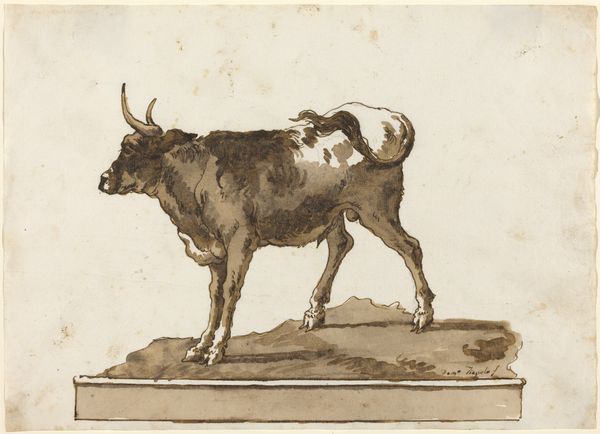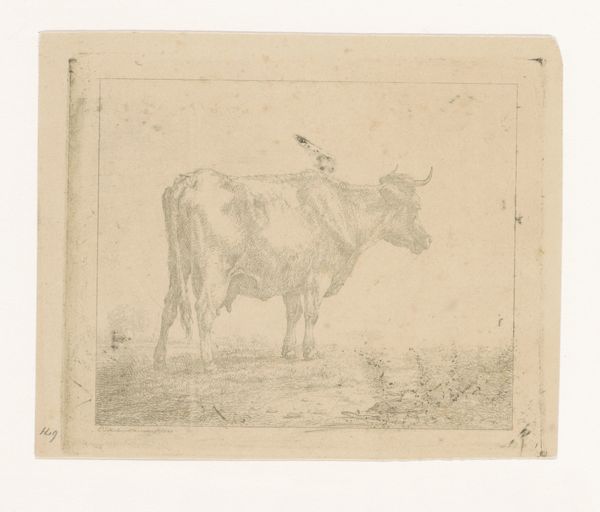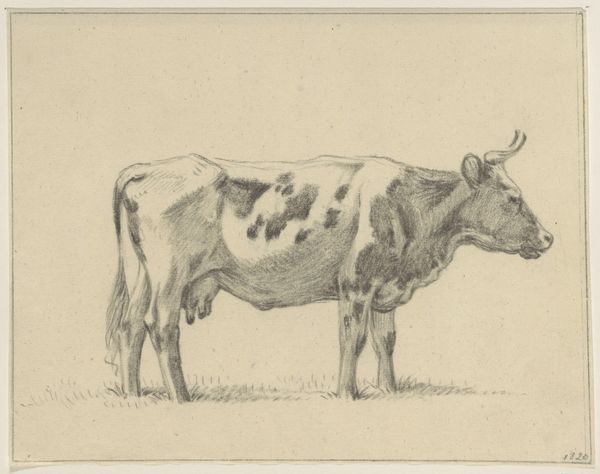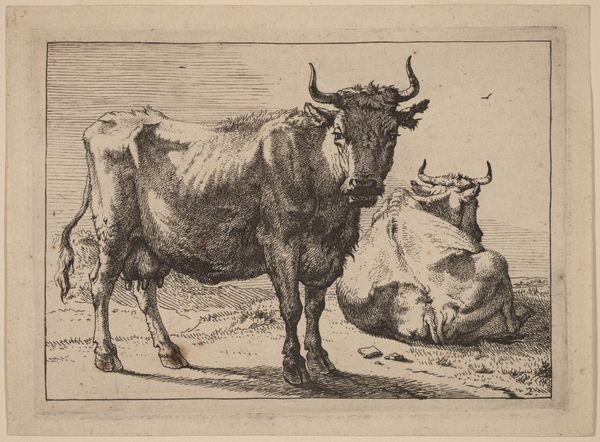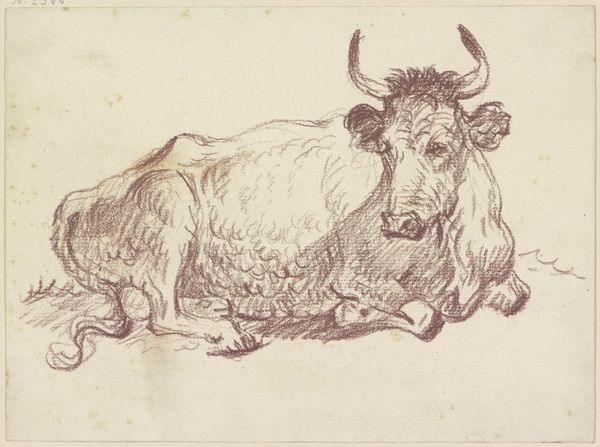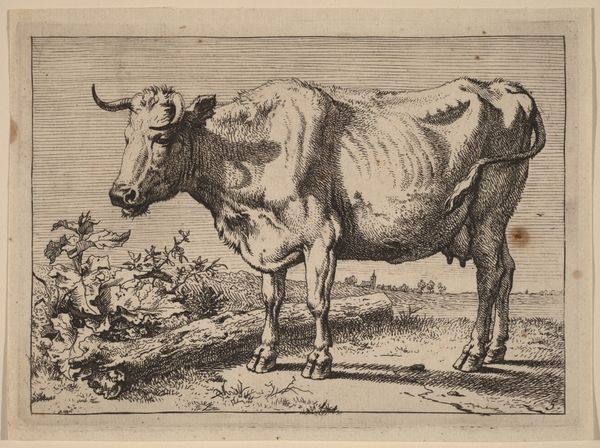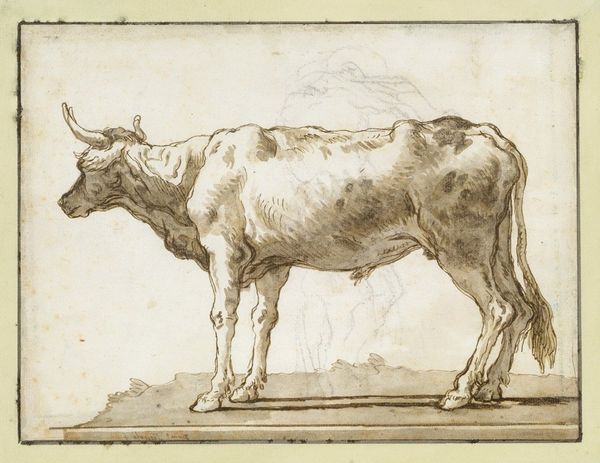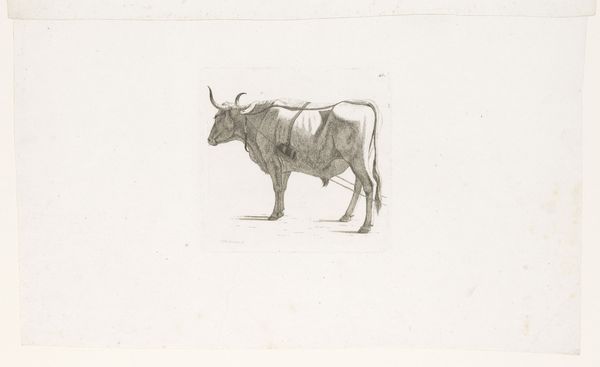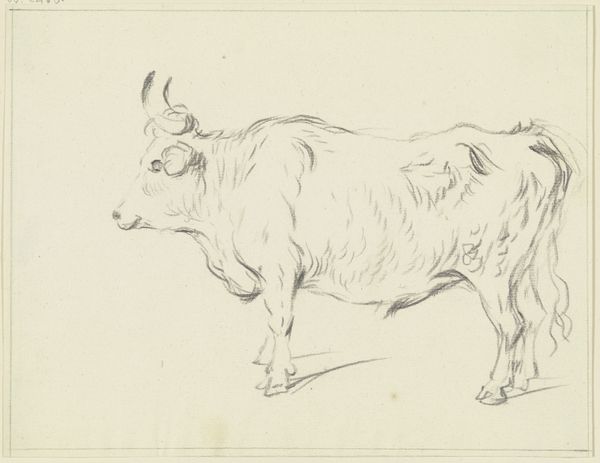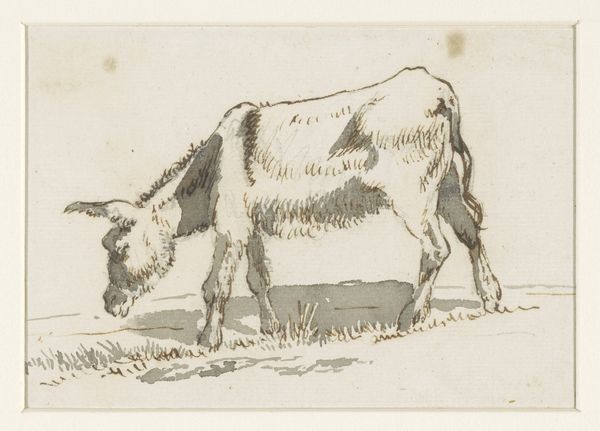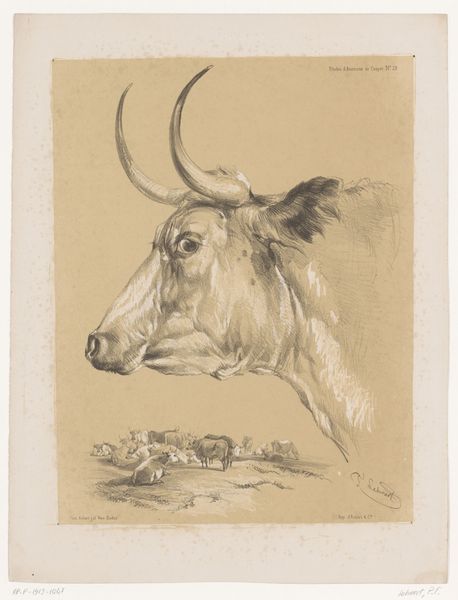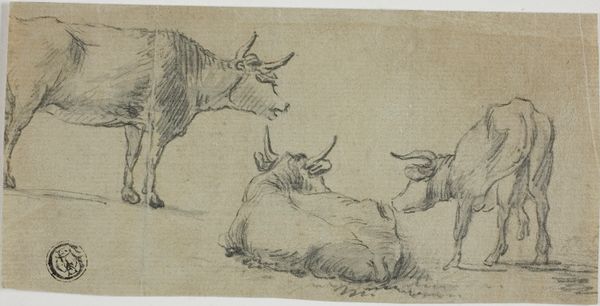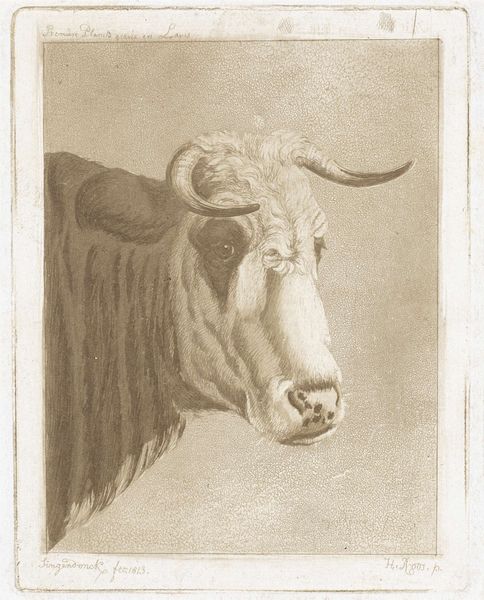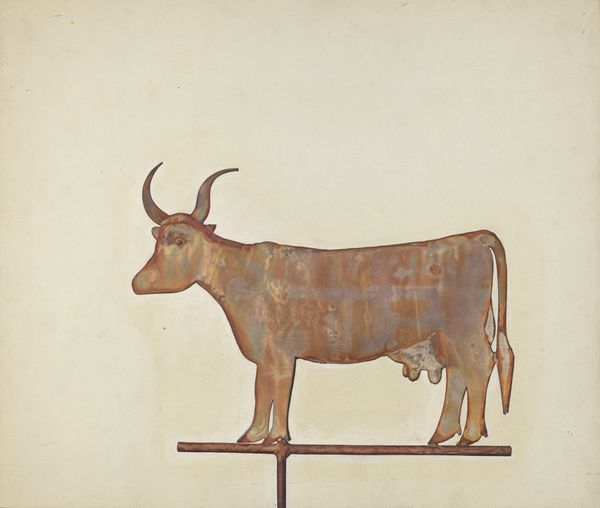
Gengivelse af en antik apis, vendt mod venstre med hovedet vendt en face 1743 - 1809
0:00
0:00
drawing, ink
#
drawing
#
pen sketch
#
figuration
#
ink
#
ancient-mediterranean
#
history-painting
#
academic-art
Dimensions: 136 mm (height) x 163 mm (width) (bladmaal)
Curator: Immediately, I am struck by its austerity. The sepia ink lends a washed-out, antique quality to this pen sketch of an Apis bull. Editor: I can see that. This artwork, entitled "Gengivelse af en antik apis, vendt mod venstre med hovedet vendt en face," by Nicolai Abildgaard, dating from 1743 to 1809, does evoke a kind of… faded grandeur. Curator: Exactly! The Apis bull was central to ancient Egyptian religious life, embodying virility and power. It was the earthly manifestation of Ptah, a creator god of Memphis. That circle between its horns isn't just decoration; it’s the sun disk, connecting the bull to the divine and to the cosmic order. Editor: It's intriguing how Abildgaard renders the Apis in such a muted palette, though. I am interested in what seems like a highly crafted blanket draped over the animal. How were those blankets made, and what social meaning was inherent in them? That grid and tassle seems so delicate when you contrast it with the raw size and power of the bull. It seems to emphasize labor through textile manufacturing. Curator: True. It almost softens the beast, doesn't it? Even domesticates it somehow. And it begs the question, how accessible would images like this have been at the time of production? The Apis itself functioned as an intermediary figure, didn't it, bridging the gap between the sacred and the earthly realm, accessible only through priestly intervention. And the means to create artworks depicting those same figures might also have functioned as objects for only specific access, too. Editor: You've raised some excellent points! For me, understanding the context surrounding materials provides such invaluable insight. Considering the labour involved, especially given its classical subject matter, brings another layer of significance to how the motif itself gains its historical resonance. Curator: Looking at the finished piece and thinking about the continuity of cultural memory--that an image so laden with specific cultural meaning from the ancient world still held some visual power centuries later. Even with our own lack of specificity in knowledge, it’s an interesting commentary on how symbols evolve yet retain echoes of their initial charge. Editor: Indeed. Abildgaard's delicate ink rendering captures that tension beautifully. It's amazing what an artwork on paper and ink can do, so long after its initial conception!
Comments
No comments
Be the first to comment and join the conversation on the ultimate creative platform.
